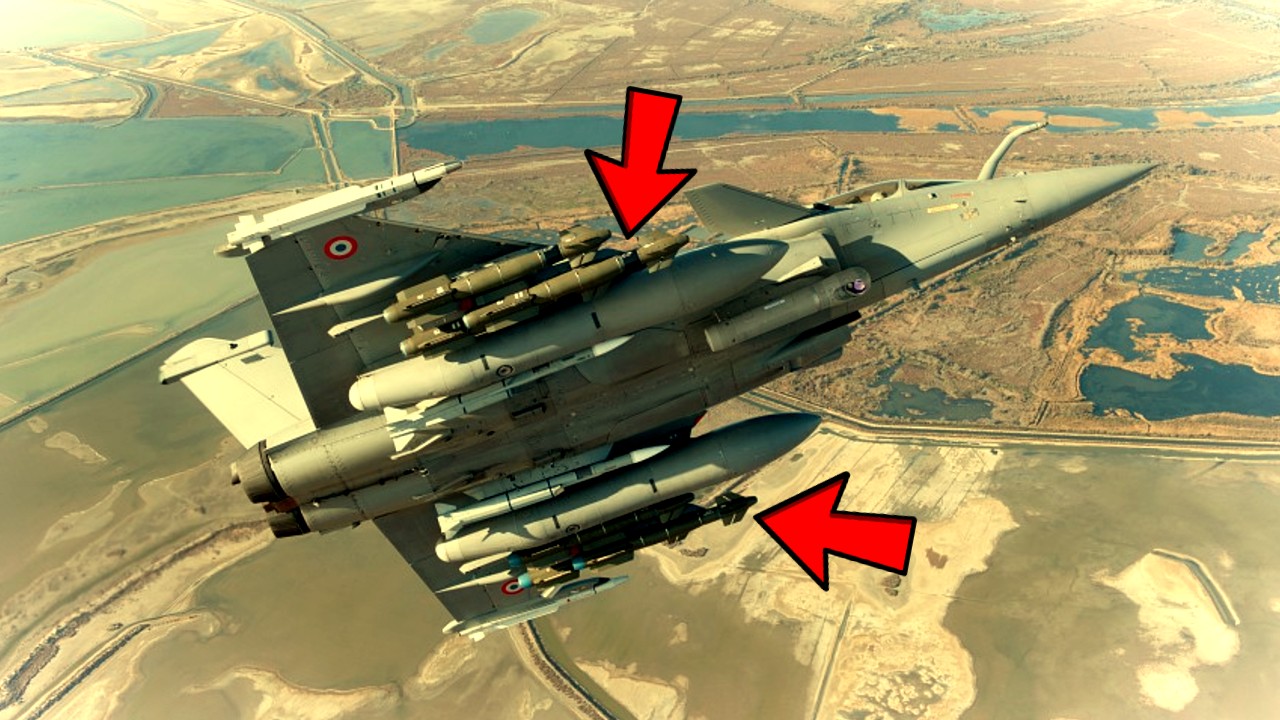
With just days to go before India’s first Rafale jets arrive in country, the Indian Air Force has exercised emergency procurement powers to contract the French Hammer AASM precision strike weapon system for the aircraft. In a decision fully in keeping with an emerging conflict scenario with China in eastern Ladakh — and with disengagement efforts hitting multiple roadblocks — choosing the Hammer isn’t surprising. But you’re a Livefist reader, and obviously you expect context. So let’s begin.
To begin with, the Hammer, developed by French conglomerate Safran (which also builds the Rafale’s M88 turbofan engines) has always officially been an option to the IAF in the Rafale package. In 2017, months after India had contracted 36 Rafale jets, Livefist reported details of what India had chosen, noting that the IAF had optioned the Hammer system for a possible decision once Rafale deliveries begin, but that it would hit the ground running with Israeli Spice guidance kits to begin with. Read that full report here.
In October last year, on the day the first Rafales were handed over to the Indian Air Force, Livefist reported the list of add-on weapons and systems that the IAF could opt for now that the jets were flying in Indian colours.
The IAF’s 2016 decision to choose the Israeli Spice precision bomb kits over the Hammer was based on cost — the French system is significantly more costly, but brings to bear additional capabilities, including effective deployability in low-level flight. It wasn’t the first time the Hammer had lost out to the Israeli Spice weapons family.
In 2012, the Hammer and Spice went head to head in an Indian Air Force quest for new 1,000 kg precision strike weaponry for its Mirage 2000 jets that were being separately upgraded. There too, the Israeli won out on cost (the Hammer didn’t have a 1,000 kg version for test, and therefore had to be tested on a 250 kg unit). Spice 2000 bombs would go on to see action in India’s air strikes on a Pakistani terror camp in Balakot in February 2019. The Indian Air Force, incidentally, has also used Ladakh-triggered emergency procurement powers to order more Spice 2000 weapons for its Mirage 2000s.
But if the IAF had chosen the Spice on its Rafales in 2016, why the need to order the Hammer system now? To understand the decision, it must be known that acquiring weapons have three broad cost components — the cost of the weapon itself, the cost of integration (software and hardware), and finally the cost of testing & certifying the system. A senior IAF officer tells Livefist that while work on integrating Spice weapons on the IAF Rafales has been underway in France in terms of software code, the bulk of the integration and crucial testing will necessarily take place in India. But how long would that take from the time the aircraft arrive? To provide perspective, it took 18 months to fully integrate, test and clear the Spice on IAF Mirages. The IAF’s rationale, therefore, in acquiring the Hammer system now, is that savings made on integration and testing the weapon — the Hammer is already fully certified on the Rafale — will justify the higher cost of the system itself. Once contracted, Hammer systems will likely begin deliveries quickly, possibly from production inventory intended for the French forces.
In France, Indian Air Force pilots have had extensive exposure to the the Hammer system already. In 2017, Livefist conducted a series of interviews with French Navy Rafale pilots who had deployed Hammer bombs on targets in Iraq. Read that full story here.
While the Hammer procurement has clearly been green-lit keeping in view the current India-China tensions in Ladakh, and the fact that inbound Rafales would be bereft of a tactical stand-off strike weapon for some time, there are likely to be more weapons contracts for the Rafale fleet going forward. The IAF Rafale’s more capable weapons — the Meteor BVRAAM and SCALP cruise missile — have been contracted in fairly modest numbers, part of an effort to keep overall costs down. It is expected, therefore, that the IAF will look to add numbers of both these systems in the near term as Rafale deliveries add up.
The IAF’s decision to push through an emergency purchase of the Hammer was scooped by India Today executive editor Sandeep Unnithan,who made a mention of it on Livefist Editor Shiv Aroor’s news show 5ive Live on Wednesday, a day before the story was reported on other media. Watch that full broadcast here:
from Livefist https://ift.tt/3eS6b3v
via Live Defense
 Reviewed by Unknown
on
03:46:00
Rating:
Reviewed by Unknown
on
03:46:00
Rating:
No comments: